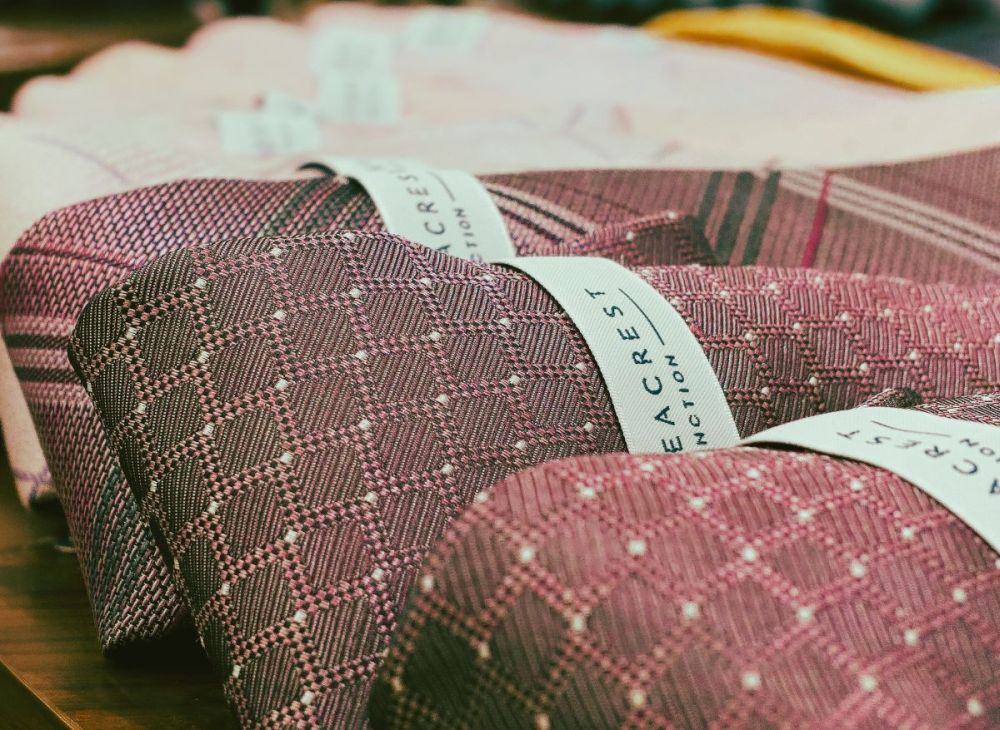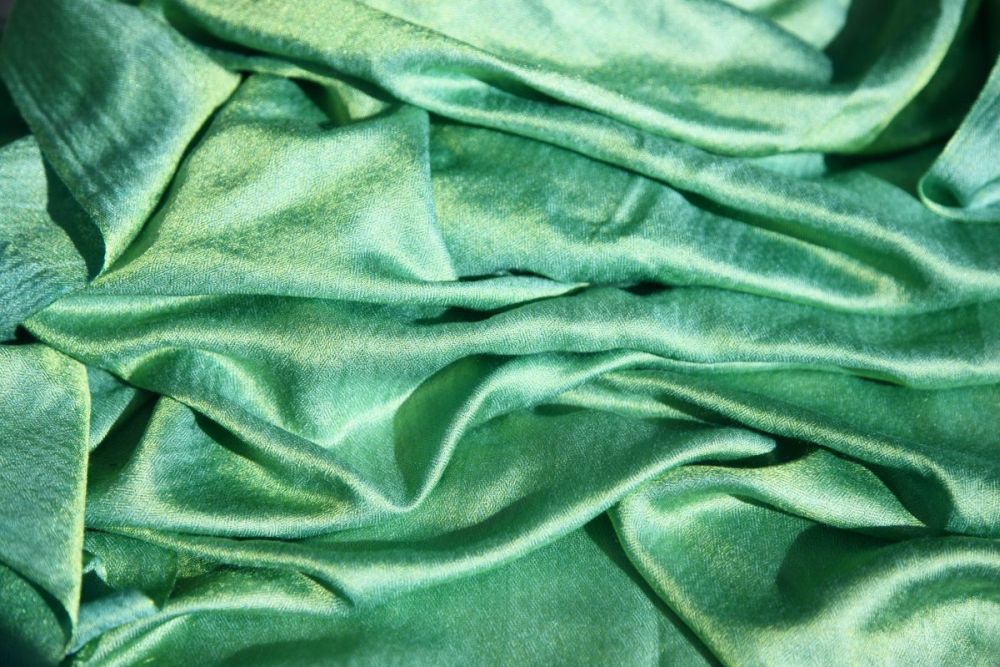Comparing polyester and cotton, two common types of fabric, is a great way to educate yourself on the subject. Despite their differences, both Polyester and cotton can be used to make clothes; Polyester is less because it is made from synthetic substances while cotton is more breathable and lighter in weight because it is a natural product. Cotton, being a natural fibre, shrinks and stretches, but polyester, being a synthetic fibre, does not.
Today's society has a heightened awareness of the factors that shape their environment. As a result of the public's growing interest in eco-friendly and renewable goods, the question has been raised, "Which do you prefer, polyester or cotton? Where is the distinction? ". If you're curious about the distinction between these two materials, keep reading so you can form your own opinion.
Cotton Vs Polyester
There is no comparison between polyester and cotton. Polyester is an unsustainable synthetic fibre that is impermeable to air and water.Cotton, on the other hand, is biodegradable, sustainable, breathable, and absorbent.
Keep in mind, however, that it is common practise to combine Polyester and cottonto create fabrics with characteristics that would be impossible to attain with either fibre alone. Each has benefits and drawbacks when viewed independently. The more you learn about the various fibres out there, the easier it will be to find one that fits your specific requirements.
Cotton Processing
Cotton is a natural fibre made entirely of cellulose that is harvested annually from plants. Lumen refers to the longitudinal opening at the centre of a cotton fibre. The lumen closes as the ball deflates and the fibre dries in the sun. Because of this motion, the fibre is distorted into a coiled shape. Cotton is hydrophobic (water repellent) because its fibres are naturally coated with waxes to protect them from the elements.Although cotton fibres have a reputation for absorbency in the marketplace, they will stay hydrophobic unless they are purified to remove the waxes and oils that naturally occur in cotton. Fibers acquire absorbency once oil and wax are rinsed away.
Cotton Properties
Cotton clothing is soft, lightweight, and breathable. It has a gentle, organic feel. It won't bother anyone with allergies. Cotton's advantageous properties make it the go-to natural fibre for a wide range of nonwoven hygiene products, from sanitary pads to baby wipes and incontinence garments.
Cotton, however, has an even wider variety of characteristics that make it ideal for use in nonwovens. Cotton fibres are considered to have an average to above-average strength among all fibres. Cotton, once dry, has a strength (tenacity) of 3.0–5.0 grams/denier. This fibre is one of a kind because its strength actually increases by 3.3-6.0 grams/denier when wet. On average, cotton can absorb and retain 8.5% of its weight in moisture. The lengths are not uniform throughout the whole thing. Finally, Cotton is both sustainable and biodegradable, so it continues to be relevant and popular in today's environmentally conscious world.
Polyester Processing
The synthetic fibre known as polyester (polythene terephthalate) is produced from petroleum, oxygen, and water. Synthetically fabricated from purified terephthalic acid (PTA) and monoethylene glycol (MEG). Because of its thermoplasticity, polyester can be easily melted and reshaped. To manufacture polyester, chemists first melt polyester pellets before forcing them through tiny openings called spinnerets. Continuous filaments of what we now call polyester fibres solidify on the spinnerets' exit side. Fiber diameter and shape are determined by the hole's size and shape. The polymers used to make the fibres are solid, so there are no air pockets within them. These filaments, known as "tow," can be spliced into shorter lengths (there is no length distribution, all fibres are manufactured to be perfectly homogeneous) to create staple fibres for use in textiles and nonwovens, or they can be left as a monofilament, similar to fishing line.
Polyester Properties
As a hydrophobic material, polyester repels water. For this reason, polyester clothes tend to make their wearers feel damp and sticky because they don't absorb sweat or other fluids. Polyester fibres also tend to be poor wickers. Polyester, therefore, is more durable and stretchable than cotton. The density of the fibres can be anywhere between 2.5 and 9.5 grammes per denier.
Cotton Vs Polyester: Key Points
The most common fabrics used in clothing and home decor are cotton and polyester, both of which are widely available and inexpensive. The practical qualities and distinctive advantages that they offer have contributed to their widespread acceptance. However, despite the fact that they can be used interchangeably in many contexts, there are important distinctions between the two.
- Polyester being entirely synthetic can give it a cold persona.
- Cotton is widely regarded as a comfortable, warm material.
FAQs
Cotton is a natural fibre that is hypoallergenic, breathable, and soft to wear. It has been used in the production of textiles for thousands of years all around the globe.
Its popularity stems from its versatility. Cotton can be used to make carpets, clothing, bedding, and upholstery. Adaptable, malleable, and easy to work with, it remains a firm favourite with home sewists and clothing manufacturers.
It comes in three fibre lengths suitable for use in a range of products. Long-staple fibres create a high-quality fabric; medium-staple is the fibre used for everyday wear, and short-staple is used for carpets and low-quality items.
Polyester is a petroleum-based synthetic material. Lighter and more durable than cotton, it is used for many of the same products. Developed in the 20th century, polyester was introduced as a garment fabric in the 1970s and became a cheaper alternative to Cotton.
The artificial nature of polyester makes it durable and long-lasting material. It is a popular fabric for outdoor and activity wear due to its moisture-wicking and quick-drying characteristics.
In one sense, yes, it is. Polyester doesn't breathe that well, and moisture and body heat can get trapped between your body and the fabric. This doesn't allow for cooler air to make it through to your skin. But each fabric is made in several different types, and you would have to compare each type against similar versions of the opposing fabric to make a definitive answer. Polyester can be warmer than 100% cotton when woven with other materials.
Cotton is also better at wicking moisture away from the body, and it is also far more breathable than polyester, which tends to stick to wet skin. While polyester is also good at moisture-wicking, which is why it is widely used for athletic clothing, Cotton performs and wears better.
Cotton: Its Benefits and Drawbacks
Benefits
- Breathable
- Hypoallergenic
- Sturdy and long-lasting
- Gentle on the skin
Drawbacks
- Takes a long time to dry
- Shrinks
- Loses its effectiveness over time
Polyester: Its Benefits and Drawbacks
Benefits
- Durable
- Simple to maintain
- Crease-resistant
- Moisture-wicking
Drawbacks
- Wears and feels like cheap plastic
- It's possible that it'll be chilly up close and personal.
- Distorts in high temperatures.
- Will not last
The Difference Between Cotton And Polyester
Breathability
Unlike some other materials, cotton allows a lot of air to pass through it. The ability of a fabric to allow perspiration to evaporate and air to circulate through its fibres is what's meant by the term "breathable." It's one of the many reasons why this fabric has been used for centuries in clothing. Cotton is great for next-to-skin garments like underwear because it allows skin to breathe.
Cotton does have its drawbacks. While the fabric is lightweight and airy, it does not wick sweat away. Instead, Cotton tends to soak up moisture and hold onto it. Time needed to dry can vary greatly depending on fabric thickness. In colder climates, this can be disastrous. Hypothermia can occur due to a slow-drying fabric in colder temperatures.
Polyester is made from petroleum and doesn't let air through. This can make clothing unbearable during the warmer months. This is due to the fact that the sweat that the body produces is trapped right next to the skin. This can lead to the fabric becoming wet and clingy, which can be annoying to wear.
Polyester, being synthetic, dries very rapidly. This is due to the fact that it does not take up moisture. They don't penetrate deeper than the surface but rather remain there until they evaporate. Outerwear and rain gear benefit greatly from being water-resistant.
Durability
Despite their differences, both polyester and cotton are long-lasting textile options. The variety of weaves that can be achieved with cotton is where its durability lies. This explains why twill is one of the most long-lasting cotton fabrics available. This is because of the density of the weave, measured in fibres per square inch. The strength of a cotton fabric increases with the density of its weave. Cotton can withstand many washes in hot water because it is actually stronger when wet.
Cotton, like silk, can be a delicate fabric that rips easily. Yet again, the weaving technique is to blame for this. You can't expect a cotton lawn to hold up like denim. Cotton fibres are naturally biodegradable. Cotton, even the thickest, eventually gives out. Cotton is vulnerable to the effects of both time and sunlight. Cotton deteriorates when too much of either is present.
Polyester has remarkable longevity. The synthetic nature of the fibres makes them highly resistant to moisture, discoloration, and creasing. And because they don't degrade, they're durable and up to the task of withstanding lots of use. Polyester has a durability problem that can make it difficult to dispose of. It's not biodegradable, and it'll sit in a landfill for centuries just like any other kind of plastic.
Warmth
Cotton is available in a range of densities, with variations to accommodate the varying temperatures that occur throughout the year. Moreover, it works wonderfully as an outer layer. When worn as an underlayer, even the thinnest summer top is suitable for wear in the colder months. It is perfect for colder climates because it can be worn as a layering piece. Due to the fabric's breathability, air can easily move between the layers, creating miniscule pockets of insulation. You can stay nice and toasty with the right combination of underwear, tee-shirt, shirt, and maybe a sweater. Some varieties of cotton are woven thicker so that they can be worn during the colder months. Clothes made of flannel or twill. Both are incredibly cosy cotton fabrics.
Unfortunately, it is possible to overheat.
Cotton is good for keeping you dry because it absorbs perspiration. However, the material does not dry out. As a result, your clothes will get wet and cold next to your skin, making you feel even colder.
Because air cannot pass through polyester easily, it acts as an insulator. In addition, it's not ideal for use against the skin because it can make you perspire. In colder climates, moisture next to the skin is unhealthy. Your body temperature will drop, causing you to freeze.
Softness
Cotton is incredibly comfortable because it is woven from the lint-like fibres of the cotton plant. Because of this suppleness, cotton clothing, especially 100% cotton, is pleasant to the touch and comfortable to wear.
However, not all Cotton is grown with the intention of being a fluffy, soft material. Cotton can refer to a wide variety of fibres and textiles. Any weave, from airy cotton voile to sturdy twill, will have the same effect on the Levin. The weaves of cotton fabrics vary, and polyester can be altered in several ways. Making a double-brushed polyester fabric is one option. As comfortable as its natural analogues, this material is exceptionally plush to the touch.
Polyester, being a synthetic fibre, can be formed into any type of fabric. The icy quality of plastic is preserved in some fibres. Some are artificially made to look and feel like natural cotton. It's not always obvious whether a fabric is made of polyester or cotton.
Thickness
Polyester and cotton both come in a wide range of thicknesses, depending on the weave and the end use. Although they are not identical, both plastic and metal are used to produce everything from delicate to robust products.
The denier of a yarn or fabric measures its thickness. The density of a fabric is measured in denier, or threads per inch. Thin weaves like cotton voile are examples of low-denier fabrics. Fabrics with a higher denier, like corduroy, have a denser weave. Although both fabrics and their weights are determined by their thread count, the latter is heavier. Polyester fabric, though thicker, will feel lighter than thick cotton.
Even though a polyester fabric's thread count could be quite high, doing so would only make the weave thicker and the fabric more long-lasting. A heavy-weight polyester will feel lighter than the thickest denim, but only slightly so.
Moisture-Wicking
Natural fibres, such as cotton and wool, are excellent at wicking away moisture. We can't say that about cotton and polyester, unfortunately. Despite being synthetic, polyester outperforms Cotton in the area of moisture management. But because it allows sweat to evaporate, it is a great addition to athletic wear. Polyester has the drawback of not being able to eliminate body odour. Though it dries quickly, it tends to retain odours from previous workouts. Thus, it is a fabric that requires frequent and timely washing.
Cotton does not evaporate sweat. This is absorbed by it. Comparatively, this is preferable to the use of moisture-wicking materials. Liquid absorption helps to rapidly remove heat from the body. This causes the clothing to become soggy and heavy with moisture. In hot climates, a sweaty shirt can actually be quite helpful for keeping you cool.
Colours
Cotton and polyester both take and hold dye well. Cotton, being a natural fibre, produces a deeper, richer colour than polyester, however. Unfortunately, Cotton is easily faded by the sun. Consequently, it tends to decrease in size as well. Because the garment will need to be washed and dried before the dyeing process can begin, the finished product may be too small.
Polyester may have a colder reaction to dyes at first, but it retains colour better in the long run. Your favourite pink shirt will retain its vibrant colour and never lose its shape, no matter how many times you wash it or how many times you hang it to dry. Polyester is more difficult to dye than cotton. To avoid damaging Cotton, you'll need a dye designed for synthetic fabrics. In a polycotton blend, this may lead to an uneven appearance. To the same extent, using cotton dye to alter the colour of a polyester thread in Cotton will not alter the colour of the thread.
Shrinking
Polyester won't shrink because of its synthetic nature. This quality makes it a popular choice for use in items that will be washed frequently. However, it doesn't like being washed in extremely hot water. Polyester melts under high temperatures. And since it's basically plastic, it can melt, too.
The shrinking effect of cotton has made it famous. Shrinkage is always greatest after the first wash and dry cycle. Because of this, people used to traditionally buy denim jeans a size larger to account for shrinkage. Cotton fabric shrinkage is less of a concern now than it once was. The nightmare of cotton shrinking has been greatly mitigated by modern manufacturing techniques and the inclusion of a stretch fibre or polyester in cotton fabrics.
Cost
Weight and quality of cotton vary. The cost varies depending on the specific weave and Cotton variety used. The quality, weave, and durability of the fibres used in a fabric's construction all contribute to its price. Most of the time, long-staple cotton fibres cost more than other types of Cotton because of their rarity and quality. However, the long fibres produce a fine, long-lasting fabric that is perfect for bedding and high-end clothing. Egyptian cotton, which is distinguished by its long fibres, is more expensive than other types of cotton, and so is Pima cotton. Carpets and other low-quality goods are made from short-staple Cotton. The lower standard of production results in a less expensive fabric.
Polyester is usually less expensive than Cotton, but its price depends on the demand for both fabrics at any given time. It's not without its flaws, but it's cheaper than its natural fibre equivalent on average. Polyester is widely used because it is durable, wrinkle-resistant, and simple to care for. The price of polyester is much lower than that of good quality cotton.
Conclusion
Cotton is a natural fibre made entirely of cellulose that is harvested annually from plants. Polyester is an unsustainable synthetic fibre that is impermeable to air and water. Cotton is hydrophobic (water repellent) because its fibres are naturally coated with waxes to protect them from the elements. Cotton fibres are considered to have an average to above-average strength among all fibres. Cotton, once dry, has a strength (tenacity) of 3.0–5.0 grams/denier.
The synthetic fibre known as polyester is produced from petroleum, oxygen, and water. Polyester clothes tend to make their wearers feel damp and sticky because they don't absorb sweat or other fluids. Cotton is great for next-to-skin garments like underwear because it allows skin to breathe. Polyester is made from petroleum and doesn't let air through. While the fabric is lightweight and airy, it does not wick sweat away.
Hypothermia can occur due to a slow-drying fabric in colder temperatures. Cotton is incredibly comfortable because it is woven from the lint-like fibres of the cotton plant. The synthetic nature of the fibres makes them highly resistant to moisture, discoloration, and creasing. And because they don't degrade, they're durable and up to the task of withstanding lots of use. Some synthetic fibres preserve the icy quality of plastic, while others are artificially made to look and feel like natural cotton.
Polyester outperforms cotton in the area of moisture management; it allows sweat to evaporate, making it a great addition to athletic wear. Heavy-weight polyester fabric will feel lighter than the thickest denim, but only slightly so. The shrinking effect of cotton has made it famous. Polyester won't shrink because of its synthetic nature. The cost varies depending on the specific weave and Cotton variety used.
Long-staple cotton fibres cost more than other types of Cotton because of their rarity and quality. Egyptian cotton is distinguished by its long fibres, which are perfect for bedding and high-end clothing.
Content Summary
- Comparing polyester and cotton, two common types of fabric, is a great way to educate yourself on the subject.
- Despite their differences, both Polyester and cotton can be used to make clothes; Polyester is less because it is made from synthetic substances while cotton is more breathable and lighter in weight because it is a natural product.
- Cotton, being a natural fibre, shrinks and stretches, but polyester, being a synthetic fibre, does not.
- Today's society has a heightened awareness of the factors that shape their environment.
- As a result of the public's growing interest in eco-friendly and renewable goods, the question has been raised, "Which do you prefer, polyester or cotton? Where is the distinction? ".
- If you're curious about the distinction between these two materials, keep reading so you can form your own opinion.
- There is no comparison between polyester and cotton.
- Polyester is an unsustainable synthetic fibre that is impermeable to air and water.
- Cotton, on the other hand, is biodegradable, sustainable, breathable, and absorbent.
- Keep in mind, however, that it is common practise to combine Polyester and cottonto create fabrics with characteristics that would be impossible to attain with either fibre alone.
- Each has benefits and drawbacks when viewed independently.
- The more you learn about the various fibres out there, the easier it will be to find one that fits your specific requirements.
- Fibers acquire absorbency once oil and wax are rinsed away.
- Cotton fibres are considered to have an average to above-average strength among all fibres.
- Finally, Cotton is both sustainable and biodegradable, so it continues to be relevant and popular in today's environmentally conscious world.
- As a hydrophobic material, polyester repels water.
- Polyester fibres also tend to be poor wickers.
- Polyester, therefore, is more durable and stretchable than cotton.
- The density of the fibres can be anywhere between 2.5 and 9.5 grammes per denier.
- Unlike some other materials, cotton allows a lot of air to pass through it.
- The ability of a fabric to allow perspiration to evaporate and air to circulate through its fibres is what's meant by the term "breathable."
- It's one of the many reasons why this fabric has been used for centuries in clothing.
- Cotton is great for next-to-skin garments like underwear because it allows skin to breathe.
- Cotton does have its drawbacks.
- While the fabric is lightweight and airy, it does not wick sweat away.
- Instead, Cotton tends to soak up moisture and hold onto it.
- Time needed to dry can vary greatly depending on fabric thickness.
- Hypothermia can occur due to a slow-drying fabric in colder temperatures.
- Polyester is made from petroleum and doesn't let air through.
- This can make clothing unbearable during the warmer months.
- Outerwear and rain gear benefit greatly from being water-resistant.
- Despite their differences, both polyester and cotton are long-lasting textile options.
- The variety of weaves that can be achieved with cotton is where its durability lies.
- This explains why twill is one of the most long-lasting cotton fabrics available.
- The strength of a cotton fabric increases with the density of its weave.
- The synthetic nature of the fibres makes them highly resistant to moisture, discoloration, and creasing.
- And because they don't degrade, they're durable and up to the task of withstanding lots of use.
- Polyester has a durability problem that can make it difficult to dispose of.
- Warmth Cotton is available in a range of densities, with variations to accommodate the varying temperatures that occur throughout the year.
- Moreover, it works wonderfully as an outer layer.
- When worn as an underlayer, even the thinnest summer top is suitable for wear in the colder months.
- It is perfect for colder climates because it can be worn as a layering piece.
- You can stay nice and toasty with the right combination of underwear, tee-shirt, shirt, and maybe a sweater.
- Some varieties of cotton are woven thicker so that they can be worn during the colder months.
- Clothes made of flannel or twill.
- Both are incredibly cosy cotton fabrics.
- Cotton is good for keeping you dry because it absorbs perspiration.
- However, the material does not dry out.
- As a result, your clothes will get wet and cold next to your skin, making you feel even colder.
- Because air cannot pass through polyester easily, it acts as an insulator.
- In addition, it's not ideal for use against the skin because it can make you perspire.
- In colder climates, moisture next to the skin is unhealthy.
- Softness Cotton is incredibly comfortable because it is woven from the lint-like fibres of the cotton plant.
- Because of this suppleness, cotton clothing, especially 100% cotton, is pleasant to the touch and comfortable to wear.
- However, not all Cotton is grown with the intention of being a fluffy, soft material.
- The icy quality of plastic is preserved in some fibres.
- Some are artificially made to look and feel like natural cotton.
- It's not always obvious whether a fabric is made of polyester or cotton.
- Polyester and cotton both come in a wide range of thicknesses, depending on the weave and the end use.
- Although they are not identical, both plastic and metal are used to produce everything from delicate to robust products.
- The denier of a yarn or fabric measures its thickness.
- The density of a fabric is measured in denier, or threads per inch.
- Thin weaves like cotton voile are examples of low-denier fabrics.
- Natural fibres, such as cotton and wool, are excellent at wicking away moisture.
- We can't say that about cotton and polyester, unfortunately.
- Despite being synthetic, polyester outperforms Cotton in the area of moisture management.
- But because it allows sweat to evaporate, it is a great addition to athletic wear.
- Polyester has the drawback of not being able to eliminate body odour.
- Thus, it is a fabric that requires frequent and timely washing.
- Cotton does not evaporate sweat. This is absorbed by it.
- Comparatively, this is preferable to the use of moisture-wicking materials.
- Liquid absorption helps to rapidly remove heat from the body.
- This causes the clothing to become soggy and heavy with moisture.
- In hot climates, a sweaty shirt can actually be quite helpful for keeping you cool.
- Your favourite pink shirt will retain its vibrant colour and never lose its shape, no matter how many times you wash it or how many times you hang it to dry.
- Polyester is more difficult to dye than cotton.
- To avoid damaging Cotton, you'll need a dye designed for synthetic fabrics.
- In a polycotton blend, this may lead to an uneven appearance.
- To the same extent, using cotton dye to alter the colour of a polyester thread in Cotton will not alter the colour of the thread.
- Polyester won't shrink because of its synthetic nature.
- This quality makes it a popular choice for use in items that will be washed frequently.
- However, it doesn't like being washed in extremely hot water.
- The shrinking effect of cotton has made it famous.
- Shrinkage is always greatest after the first wash and dry cycle.
- Because of this, people used to traditionally buy denim jeans a size larger to account for shrinkage.
- Cotton fabric shrinkage is less of a concern now than it once was.
- The nightmare of cotton shrinking has been greatly mitigated by modern manufacturing techniques and the inclusion of a stretch fibre or polyester in cotton fabrics.
- Weight and quality of cotton vary.
- The cost varies depending on the specific weave and Cotton variety used.
- The quality, weave, and durability of the fibres used in a fabric's construction all contribute to its price.
- Most of the time, long-staple cotton fibres cost more than other types of Cotton because of their rarity and quality.
- However, the long fibres produce a fine, long-lasting fabric that is perfect for bedding and high-end clothing.
- Carpets and other low-quality goods are made from short-staple Cotton.
- The lower standard of production results in a less expensive fabric.
- Polyester is usually less expensive than Cotton, but its price depends on the demand for both fabrics at any given time.







